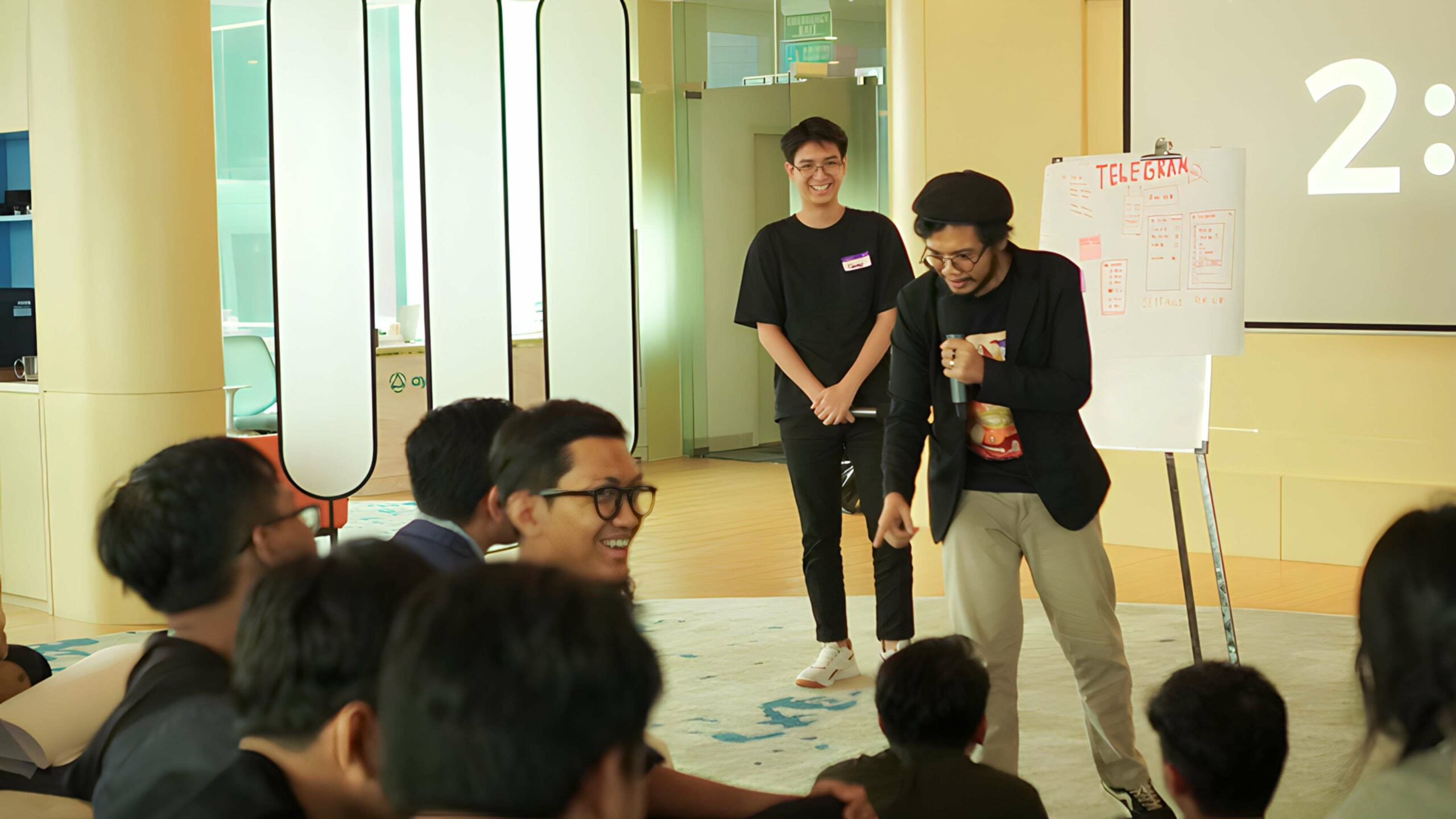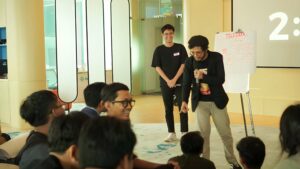In a tech company, the role of a designer is crucial as they bridge the gap between ideas and technical implementation. At INKOR, designers engage directly with stakeholders and clients to understand the problems inherent in a project, which ultimately guides the execution of targeted and effective ideas. The demands on designers have become increasingly complex amidst the variety of problems and project types they handle. Here are five points that designers should possess to consistently make an impact within a team:
(1) Teamwork & Attitude
Supportive, competitive, and adept at reporting.
In essence, this is how we position ourselves to work effectively in teams. As a designer, it’s impossible to work alone. UI/UX Designers need programmers. Graphic Designers need Copywriters, and so forth.
Takeaways:
- Respect colleagues, both junior and senior, appreciate their work, and always support positive actions.
- Learn to view team mistakes as learning processes; there’s no need to highlight someone’s errors (unless it’s funny, maybe).
- For mid to senior levels, empower team members to handle their work without micro-managing.
- Engage in frequent discussions and share design resources with the team.
- Foster a competitive environment to boost individual skill enhancement.
- Competitiveness here isn’t about seeking recognition as the best designer in the team but rather focusing on personal skill development—You vs Yourself.
- Regularly hone presentation and reporting skills, making them easy for others to understand.
- Regardless of your level, avoid being overconfident; everyone has unique knowledge, and there’s always room to learn from each other.
(2) Visual Design
Mastering design fundamentals and having a good sense of art.
First, we must differentiate between art and design to understand why each design execution needs a strong rationale. It’s essential to deepen our design knowledge, as only non-designers should critique designs without clear reasons, such as “this part isn’t attractive” (without explanation, subjective).
Takeaways:
- Design according to principles like Contrast, Visual Hierarchy, Balance, Proximity.
- Ensure you can explain the rationale behind every design execution.
- Familiarize yourself with various popular design styles like Brutalism, Neo-Brutalism, Glassmorphism, Flat Design, etc.
- Master design techniques such as Golden Ratio, Negative Space, Rule Of Three, and apply them in designs.
- Study design laws, formulas, and frameworks like CRAP, 10 Timeless Commandments, Law Of UX, Design Thinking, Design Sprint, etc.
(3) Creative Thinking
Creativity for problem-solving.
How we creatively solve problems and manifest them into design form. Broad insights provide more ideas to explore and produce genuinely creative concepts.
Takeaways:
- Start with literal thinking when generating ideas, then switch to lateral thinking until you find cool ideas.
- Become more familiar with AI (Artificial Intelligence); use AI for inspiration and more references to generate new ideas.
- Employ brainstorming techniques, such as creating mind maps.
- Engage in activities outside design; good ideas often come unexpectedly.
(4) Critical Thinking
Analytical, questioning, logical, objective.
This requires practice and involves maintaining objectivity, logic, and rationality in all situations. Continuously refine your ability to critically evaluate ideas or information.
Takeaways:
- Set aside emotional approaches, personal feelings, and especially ego when making decisions
- Build a strong foundation before drawing conclusions.
- Zoom out or consider problems from various perspectives.
- Embrace criticism openly.
- Maintain an open mind, especially during meetings where your proposals might face resistance; just have fun, as no one needs to win here.
- I’m not sure if this counts, but try improving critical thinking by watching stand-up comedy from Bill Burr, Louis CK, or Om Deddy’s cliffside humor on YouTube; enjoy it and don’t take offense
(5) Growth Mindset
Believe in learning and improvement.
Enthusiastic learners like these make teams vibrant. Whether working in a team or as a solo designer, this is crucial. Stay relevant with development and continuously upgrade skills without falling prey to the “Dunning-Kruger effect” (related to point 1).
Takeaways:
- Practice regularly and showcase on platforms like Dribbble, Behance, or others; observe design trends and experiment with styles.
- Read design books.
- Follow design influencers for new insights.
- Consider joining boot camps or online classes (research to ensure they’re led by professionals).
- Join groups or communities and identify design experts or seniors in the field.
- Try writing on LinkedIn or Medium.






